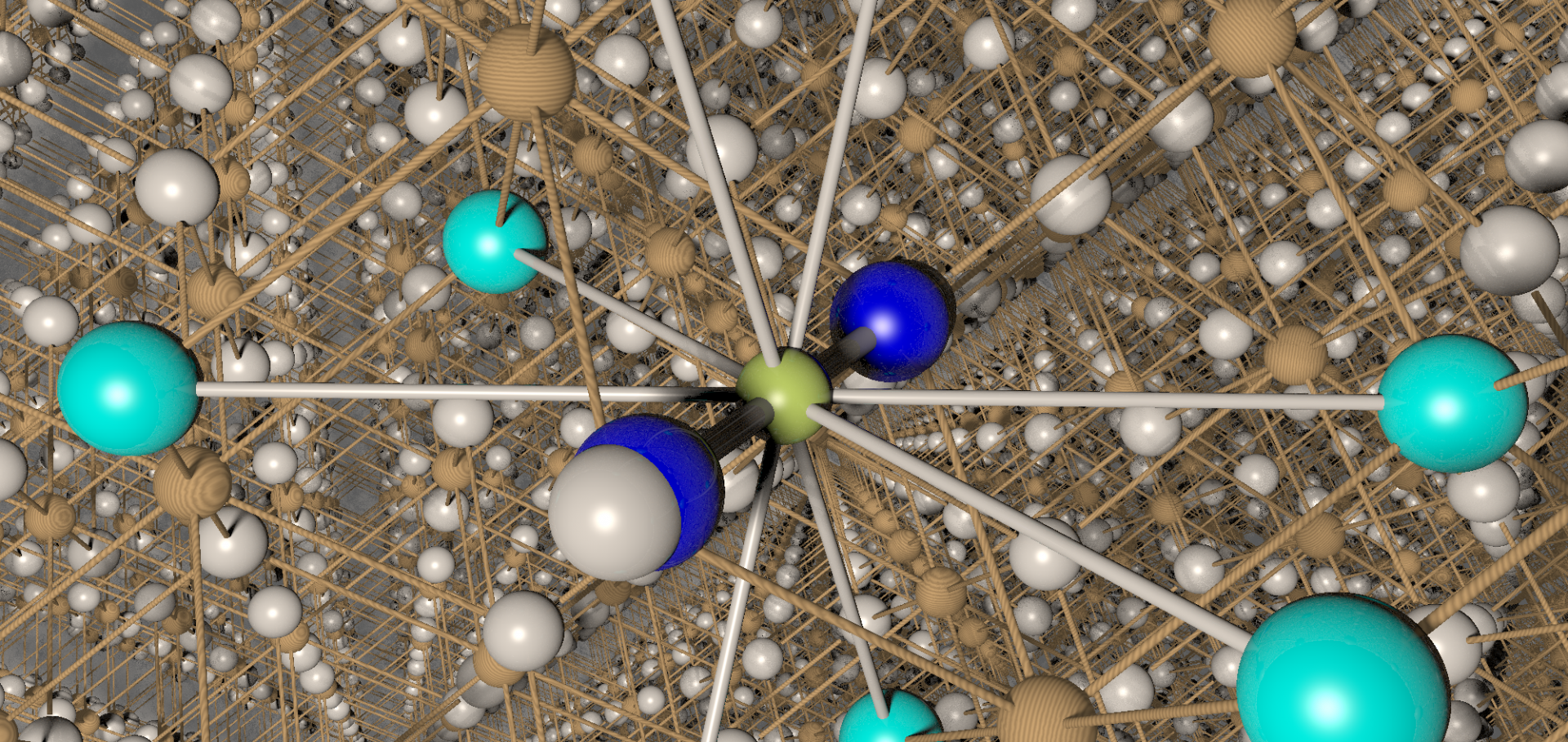Probing magnetic order and disorder in the one-dimensional molecular spin chains CuF2(pyz) and [Ln(hfac)3(boaDTDA)] n (Ln = Sm, La) using implanted muons.
Journal of physics. Condensed matter : an Institute of Physics journal 31:39 (2019) 394002-394002
Abstract:
We present the results of muon-spin relaxation ([Formula: see text]SR) measurements on antiferromagnetic and ferromagnetic spin chains. In antiferromagnetic CuF2(pyz) we identify a transition to long range magnetic order taking place at [Formula: see text] K, allowing us to estimate a ratio with the intrachain exchange of [Formula: see text] and the ratio of interchain to intrachain exchange coupling as [Formula: see text]. The ferromagnetic chain [Sm(hfac)3(boaDTDA)] n undergoes an ordering transition at [Formula: see text] K, seen via a broad freezing of dynamic fluctuations on the muon (microsecond) timescale and implying [Formula: see text]. The ordered radical moment continues to fluctuate on this timescale down to 0.3 K, while the Sm moments remain disordered. In contrast, the radical spins in [La(hfac)3(boaDTDA)] n remain magnetically disordered down to T = 0.1 K suggesting [Formula: see text].Robustness of superconducting properties to transition metal substitution and impurity phases in Fe1-xVxSe
PHYSICAL REVIEW B 100:9 (2019) 94527
Abstract:
© 2019 American Physical Society. We have performed transverse- and zero-field muon spin rotation/relaxation experiments, as well as magnetometry measurements, on samples of Fe1-xVxSe and their Li+NH3 intercalates Li0.6(NH2)0.2(NH3)0.8Fe1-xVxSe. We examine the low vanadium substitution regime: x=0.005, 0.01, and 0.02. The intercalation reaction significantly increases the critical temperature (Tc) and the superfluid stiffness for all x. The nonintercalated samples all exhibit Tc≈8.5 K while the intercalated samples all show an enhanced Tc>40 K. Vanadium substitution has a negligible effect on Tc, but seems to suppress the superfluid stiffness for the nonintercalated samples and weakly enhance it for the intercalated materials. The optimal substitution level for the intercalated samples is found to be x=0.01, with Tc≈41K and λab(0)≈0.18μm. The nonintercalated samples can be modeled with either a single d-wave superconducting gap or with an anisotropic gap function based on recent quasiparticle imaging experiments, whereas the intercalates display multigap nodal behavior which can be fitted using s+d- or d+d-wave models. Magnetism, likely from iron impurities, appears after the intercalation reaction and coexists and competes with the superconductivity. However, it appears that the superconductivity is remarkably robust to the impurity phase, providing an avenue to stably improve the superconducting properties of transition metal substituted FeSe.Determining the anisotropy and exchange parameters of polycrystalline spin-1 magnets
NEW JOURNAL OF PHYSICS 21:9 (2019) 93025
Abstract:
© 2019 The Author(s). Published by IOP Publishing Ltd on behalf of the Institute of Physics and Deutsche Physikalische Gesellschaft. Although low-dimensional S = 1 antiferromagnets remain of great interest, difficulty in obtaining high-quality single crystals of the newest materials hinders experimental research in this area. Polycrystalline samples are more readily produced, but there are inherent problems in extracting the magnetic properties of anisotropic systems from powder data. Following a discussion of the effect of powder-Averaging on various measurement techniques, we present a methodology to overcome this issue using thermodynamic measurements. In particular we focus on whether it is possible to characterise the magnetic properties of polycrystalline, anisotropic samples using readily available laboratory equipment. We test the efficacy of our method using the magnets [Ni(H2O)2(3,5-lutidine)4](BF4)2 and Ni(H2O)2(acetate)2(4-picoline)2, which have negligible exchange interactions, as well as the antiferromagnet [Ni(H2O)2(pyrazine)2](BF4)2, and show that we are able to extract the anisotropy parameters in each case. The results obtained from the thermodynamic measurements are checked against electron-spin resonance and neutron diffraction. We also present a density functional method, which incorporates spin-orbit coupling to estimate the size of the anisotropy in [Ni(H2O)2(pyrazine)2](BF4)2.Muon-spin relaxation and AC magnetometry study of the ferrimagnet LaSr2Cr2SbO9
Journal of Solid State Chemistry Elsevier 279 (2019) 120935


